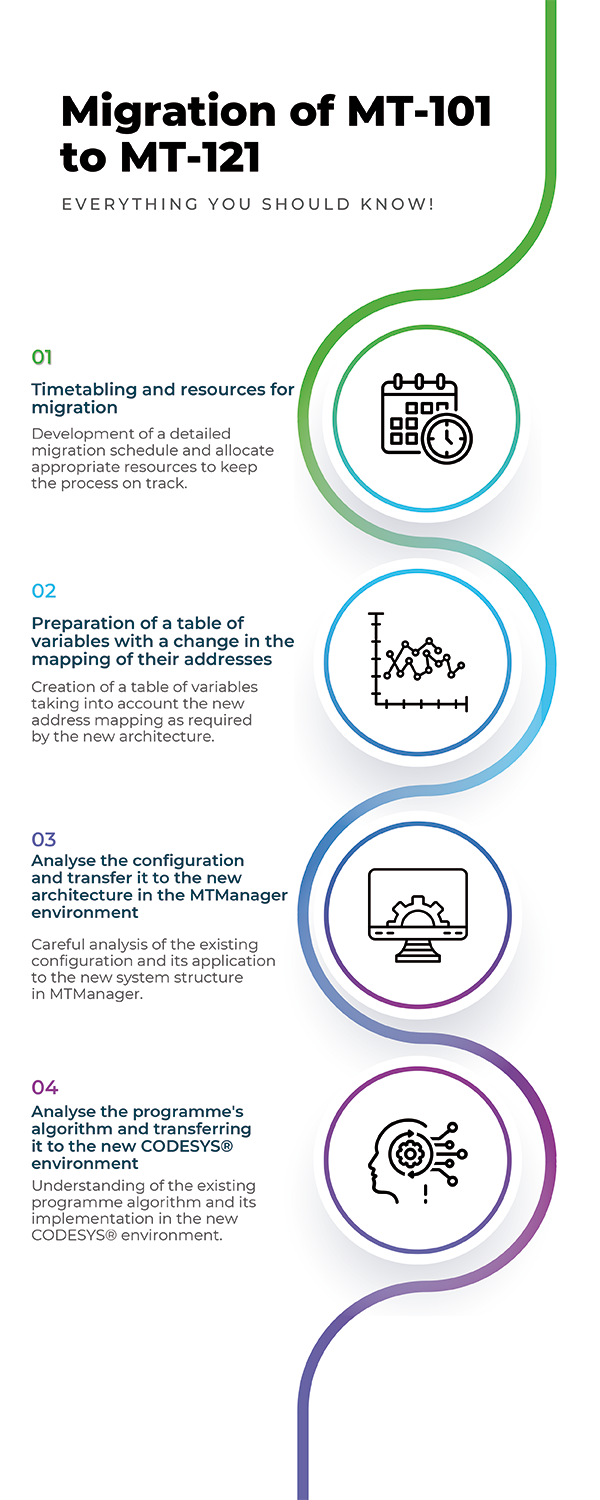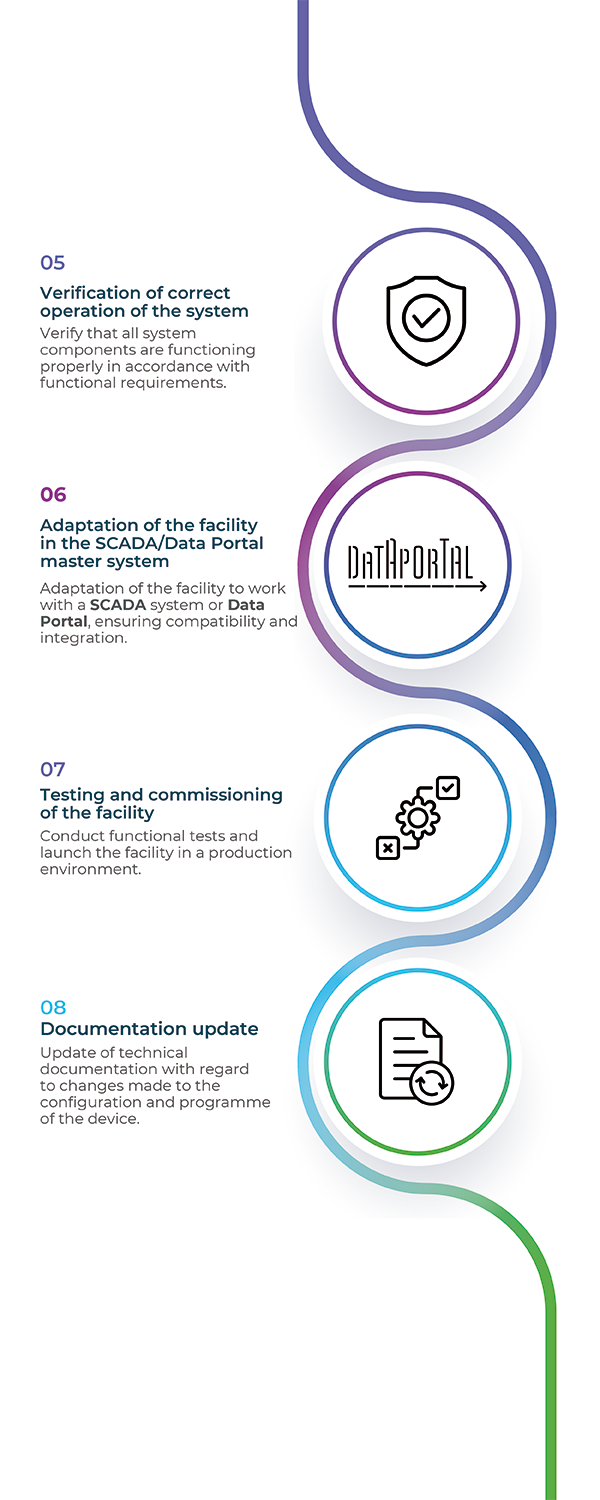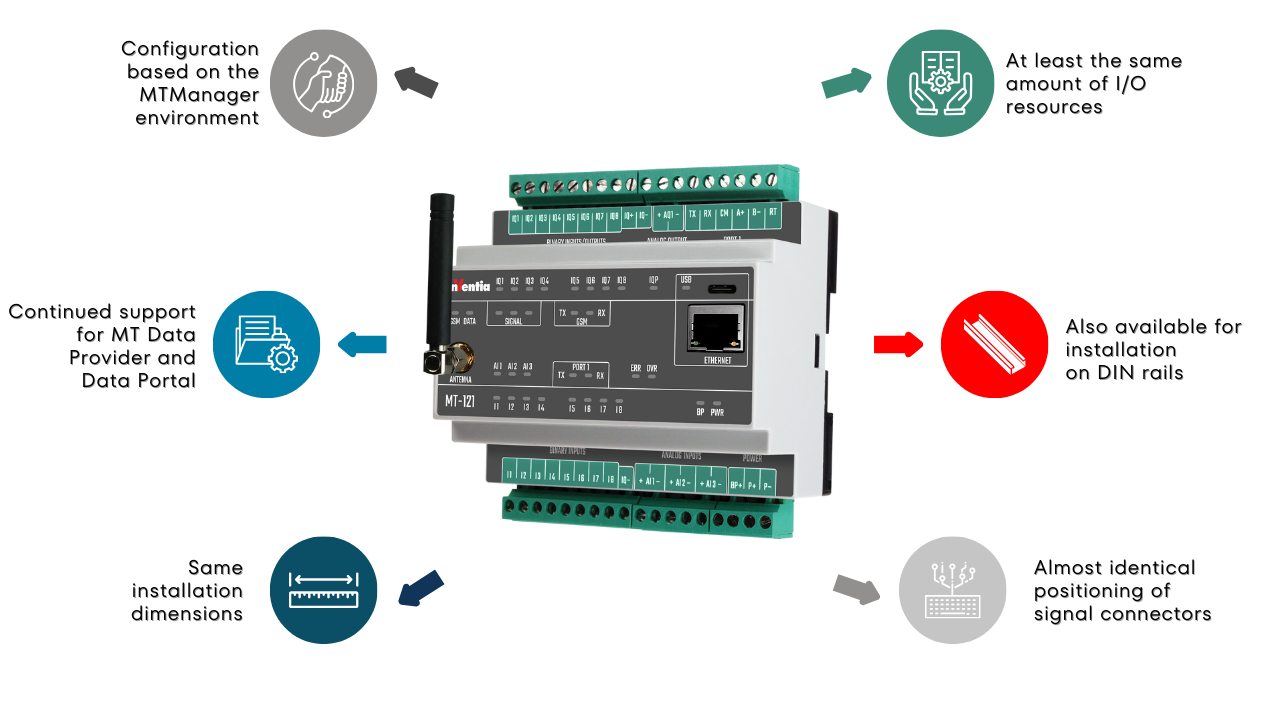Each installation has unique characteristics depending on the specifics of the company in question and therefore requires an individual approach. Nevertheless, a few key elements can be identified. Migrating from MT-101 to MT-121 requires careful planning, taking into account technical and organisational aspects. The first step is a system audit to identify strengths and areas for improvement. Next, the needs of the business and the capabilities of the new device, the MT-121, should be analysed. The next step is detailed migration planning, including configuration, installation, integration and testing. The process should be staged to minimise the risk of disruption, and staff should be trained accordingly. After installation, testing is carried out, optimising the system to realise the full potential of the MT-121.













